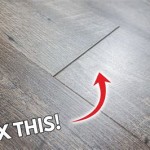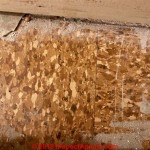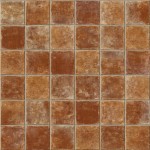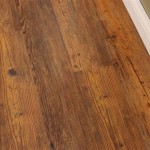When it comes to protecting your flooring, vinyl gap filler is an essential part of the process. This product helps to fill in any gaps or cracks in your flooring, ensuring that it is kept in top condition. But, it can be tricky to know what kind of vinyl gap filler to choose and how to apply it correctly. This article will provide a comprehensive guide to help you achieve the best results when it comes to filling those pesky gaps in your vinyl flooring.
Types of Vinyl Gap Filler
There are a few different types of vinyl gap filler available. The most common type is a two-part epoxy resin filler. This type of filler is easy to apply and is perfect for filling small gaps in your flooring. It dries quickly and is highly durable. Another type of vinyl gap filler is a vinyl-based caulk. This type of filler is less durable than the epoxy resin, but it is perfect for filling larger gaps in your flooring. It is also easy to apply.
Choosing the Right Vinyl Gap Filler
When choosing the right vinyl gap filler, you should consider the size of the gap that needs to be filled as well as the type of flooring. The epoxy resin filler is best for smaller gaps, while the vinyl-based caulk is better for larger gaps. You should also consider the color of the filler. If you are filling a gap in a light-colored floor, you should choose a filler that is the same color as your flooring. If you are filling a gap in a dark-colored floor, you should choose a dark-colored filler.
Preparing the Area
Before you begin to fill the gap, you should make sure that the area is clean and dry. Use a vacuum cleaner to remove any dirt and dust from the area. You should also make sure that the gap is free of any debris or obstructions. Once the area is clean and dry, you can begin to fill the gap.
Applying the Vinyl Gap Filler
When it comes to applying the vinyl gap filler, you should use a putty knife or a caulking gun. If you are using an epoxy resin filler, you should mix the two parts together in a small bowl. Once the filler is mixed, you can apply it to the gap with the putty knife. If you are using a vinyl-based caulk, you should cut the tip off of the tube and apply the filler using the caulking gun. Make sure that the gap is completely filled and that all of the edges are sealed.
Finishing the Job
Once the vinyl gap filler has been applied and the gap is filled, you should allow it to dry completely. This can take anywhere from a few hours to overnight, depending on the type of filler that you are using. Once it is dry, you can use a damp cloth to wipe away any excess filler. You should also check to make sure that the gap is still filled. If not, you may need to apply more filler.
Conclusion
Vinyl gap filler is essential for protecting your flooring and keeping it in top condition. When it comes to choosing the right vinyl gap filler and applying it correctly, it is important to consider the size of the gap, the type of flooring, and the color of the filler. By following the steps outlined above, you can ensure that you get the best results when it comes to filling those pesky gaps in your vinyl flooring.














Related Posts








